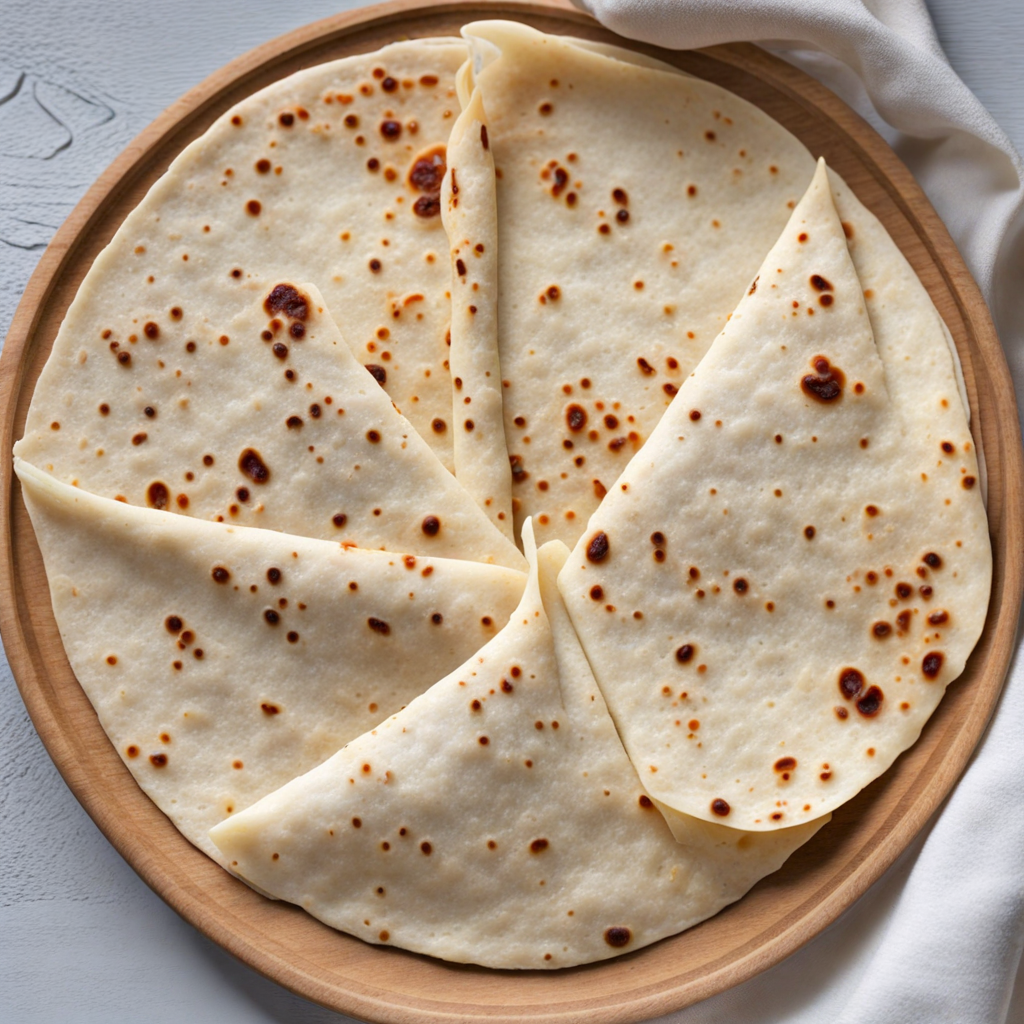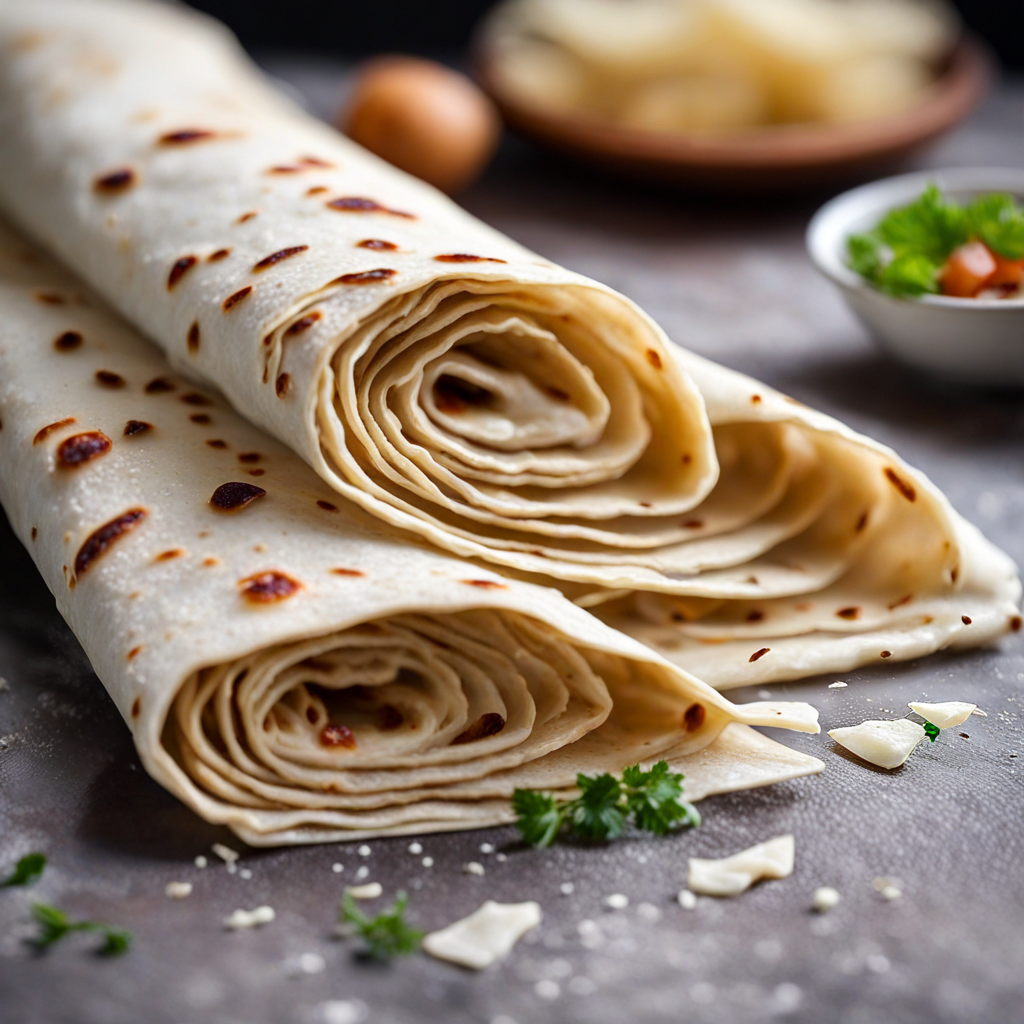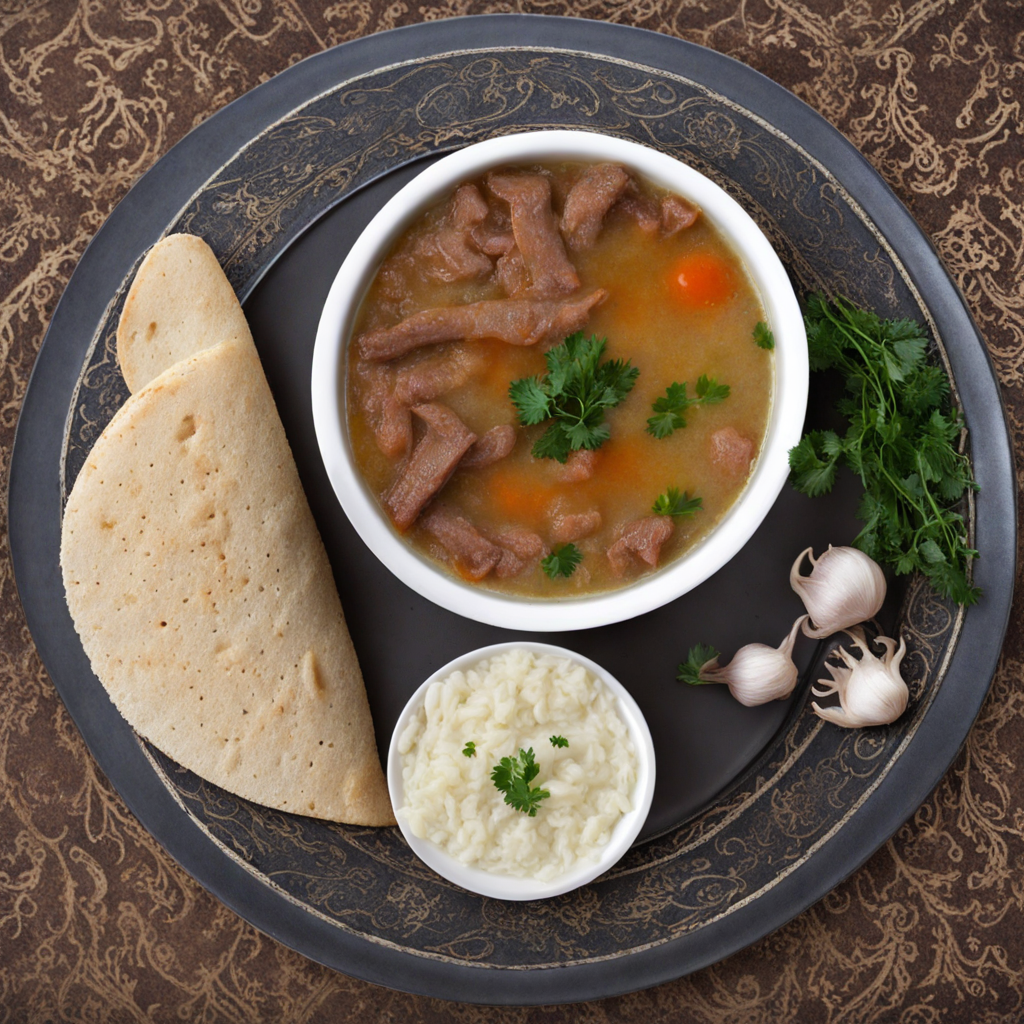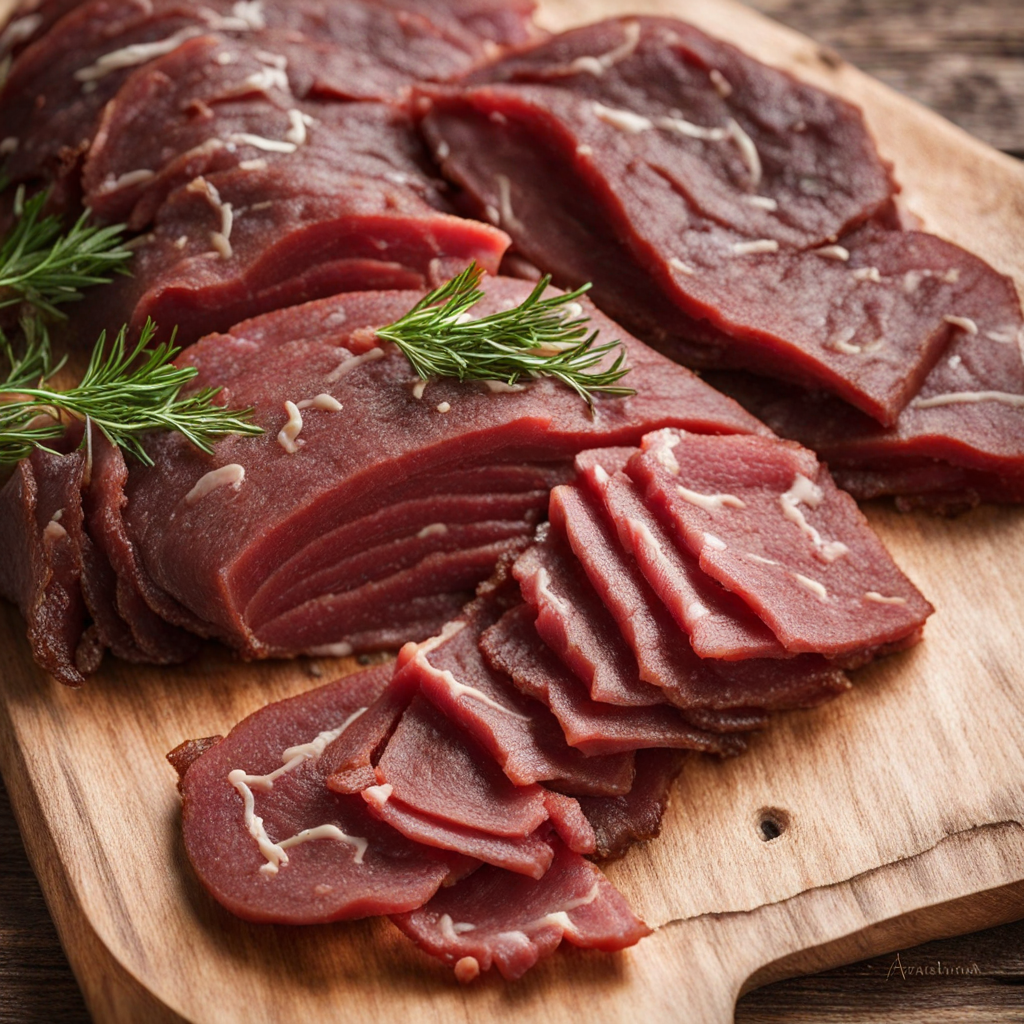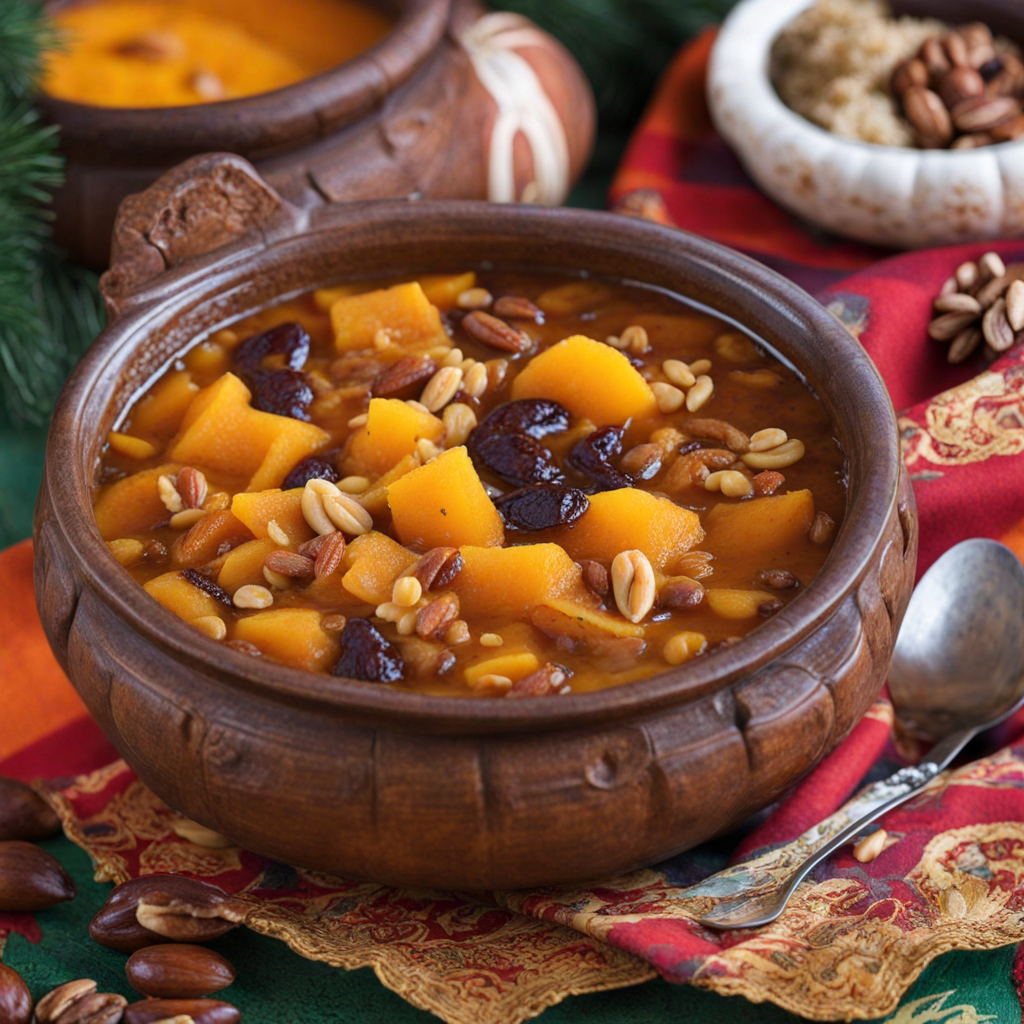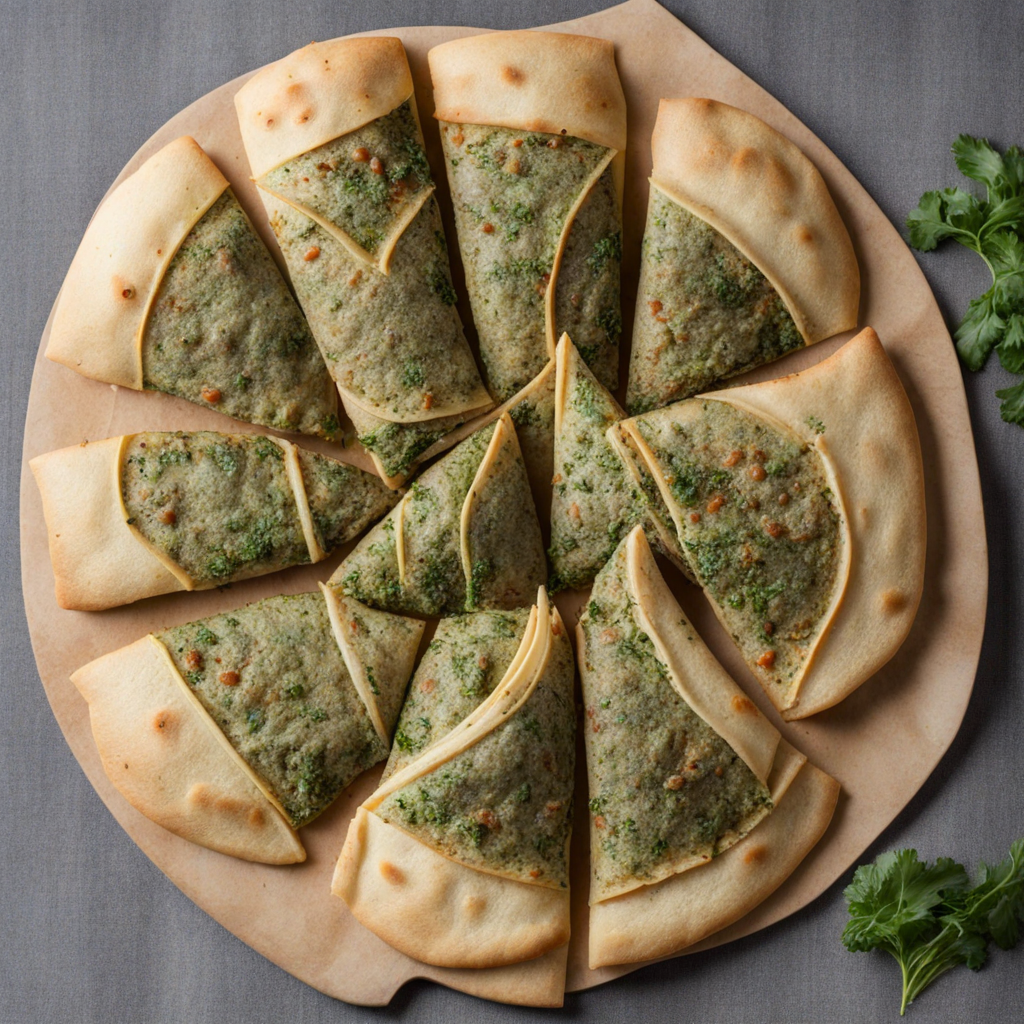Lavash
Lavash is a traditional Armenian flatbread that has captivated food lovers with its unique texture and flavor. This unleavened bread is made from simple ingredients, including flour, water, and salt, which are combined to create a soft, pliable dough. Once rolled out into thin sheets, the dough is traditionally baked in a tandoor, a cylindrical clay oven that imparts a delightful smoky flavor to the bread. The process of baking creates a slightly chewy exterior while retaining a tender, airy inside, making lavash a versatile accompaniment to various dishes. The taste of lavash is subtly nutty, and its slightly toasted aroma enhances the overall experience. It is often served warm and can be used to wrap around meats, vegetables, and cheeses, making it an ideal vessel for enjoying a range of flavors. Whether paired with succulent kebabs, fresh herbs, or tangy cheeses, lavash acts as a canvas that elevates each bite, allowing the natural flavors of the fillings to shine through. As a cultural staple, lavash is not only consumed during meals but is also integral to many Armenian celebrations and gatherings. In addition to its culinary versatility, lavash carries a rich history and significance within Armenian culture. It is often shared among family and friends, symbolizing hospitality and togetherness. The bread is also a key ingredient in various traditional dishes, such as "Lavash Kebab," where grilled meats are wrapped in the bread, or "Basturma," where cured meats are enjoyed with lavash as a delightful pairing. Experiencing lavash is not just about tasting a unique food; it's about immersing oneself in the rich culinary heritage of Armenia, making it a must-try for any adventurous food lover.
How It Became This Dish
Origins of Lavash Lavash, the traditional Armenian flatbread, has a rich history that dates back thousands of years. Its origins can be traced to the ancient civilizations of the Caucasus region, where the practice of baking bread in a clay oven, known as a tandoor, has been prevalent. Archaeological evidence suggests that flatbreads similar to lavash were made as far back as 3000 BC, making it one of the oldest types of bread in the world. The methods of preparation and baking were passed down through generations, establishing lavash as a staple food in Armenia and neighboring regions. The name "lavash" itself is thought to be derived from the Persian word "lavash," which means "bread." While its precise etymology is debated, it is clear that lavash has been a fundamental part of the diet in Armenia and surrounding territories for millennia. Its simple ingredients—flour, water, and salt—make it accessible to all social classes, and its versatility allows it to be paired with various dishes, enhancing the overall dining experience. \n\n Cultural Significance of Lavash Lavash is not just a food item; it embodies the cultural identity of the Armenian people. It is often associated with family gatherings, celebrations, and everyday meals. The process of making lavash is communal, with families often coming together to prepare and bake the bread. This practice reinforces social bonds and community spirit, making lavash a symbol of hospitality and togetherness. In Armenian culture, lavash is traditionally served with numerous dishes, including grilled meats, stews, and various cheeses. The bread is not only a staple but also a vehicle for other foods, as it is often used to wrap around meats and vegetables, similar to how tortillas are used in Mexican cuisine. This adaptability has made lavash a beloved component of the Armenian culinary landscape. Moreover, lavash holds deep meaning in the context of Armenian identity, especially in the face of historical challenges. During the Armenian Genocide, lavash became a symbol of resilience and survival. It served as a reminder of home and cultural heritage for those who were displaced. Today, lavash is a central part of Armenian cuisine and is celebrated as an expression of national pride. \n\n Traditional Preparation Methods The traditional method of making lavash is an art form that has been recognized by UNESCO as an Intangible Cultural Heritage of Humanity. The process begins with mixing flour, water, and salt to create a soft dough. The dough is then divided into small balls, which are rolled out into thin circles. The key to authentic lavash lies in the baking method; it is traditionally baked in a tandoor, a cylindrical clay oven that provides high heat and unique flavor. Bakers use a long wooden paddle called a "recha" to place the rolled dough against the inner walls of the tandoor. The intense heat from the clay oven cooks the bread quickly, giving it a characteristic texture—soft and pliable on the inside, with a slightly crispy exterior. The baking process is a communal activity, often accompanied by songs and stories that further emphasize its cultural significance. Over the years, various regions have developed their own unique styles of lavash, reflecting local ingredients and tastes. In some areas, lavash is thicker, while in others, it is paper-thin. The variations showcase the adaptability of this ancient bread, allowing it to maintain relevance in contemporary Armenian cuisine. \n\n Modern Developments As Armenia has evolved, so too has the production and consumption of lavash. In recent years, there has been a resurgence of interest in traditional food practices, leading to a revival of artisanal lavash-making techniques. Many young Armenians are returning to their culinary roots, learning the age-old methods of baking lavash in tandoors and emphasizing the importance of using high-quality, organic ingredients. Additionally, lavash has found its way into modern gastronomy, being featured in contemporary dishes that reimagine traditional recipes. Chefs are experimenting with lavash by incorporating it into gourmet meals, serving it with unique fillings or using it as a base for innovative appetizers. This fusion of tradition and modernity showcases the versatility of lavash and its ability to adapt to changing culinary landscapes. Furthermore, the globalization of food culture has introduced lavash to a wider audience. Its increasing popularity can be seen in Middle Eastern and Mediterranean cuisines, where it is commonly used as a wrap or served alongside various dishes. This expansion has contributed to a growing appreciation for Armenian cuisine and culture on an international scale. \n\n Conclusion In conclusion, lavash is much more than just bread; it is a vital part of Armenian heritage that has stood the test of time. From its ancient origins to its modern-day adaptations, lavash reflects the resilience and creativity of the Armenian people. The communal aspects of its preparation, its role in celebrations, and its status as a symbol of national identity all contribute to its enduring significance. As lavash continues to evolve, it remains a cherished element of Armenian culture, connecting generations and bridging the past with the present.
You may like
Discover local flavors from Armenia


